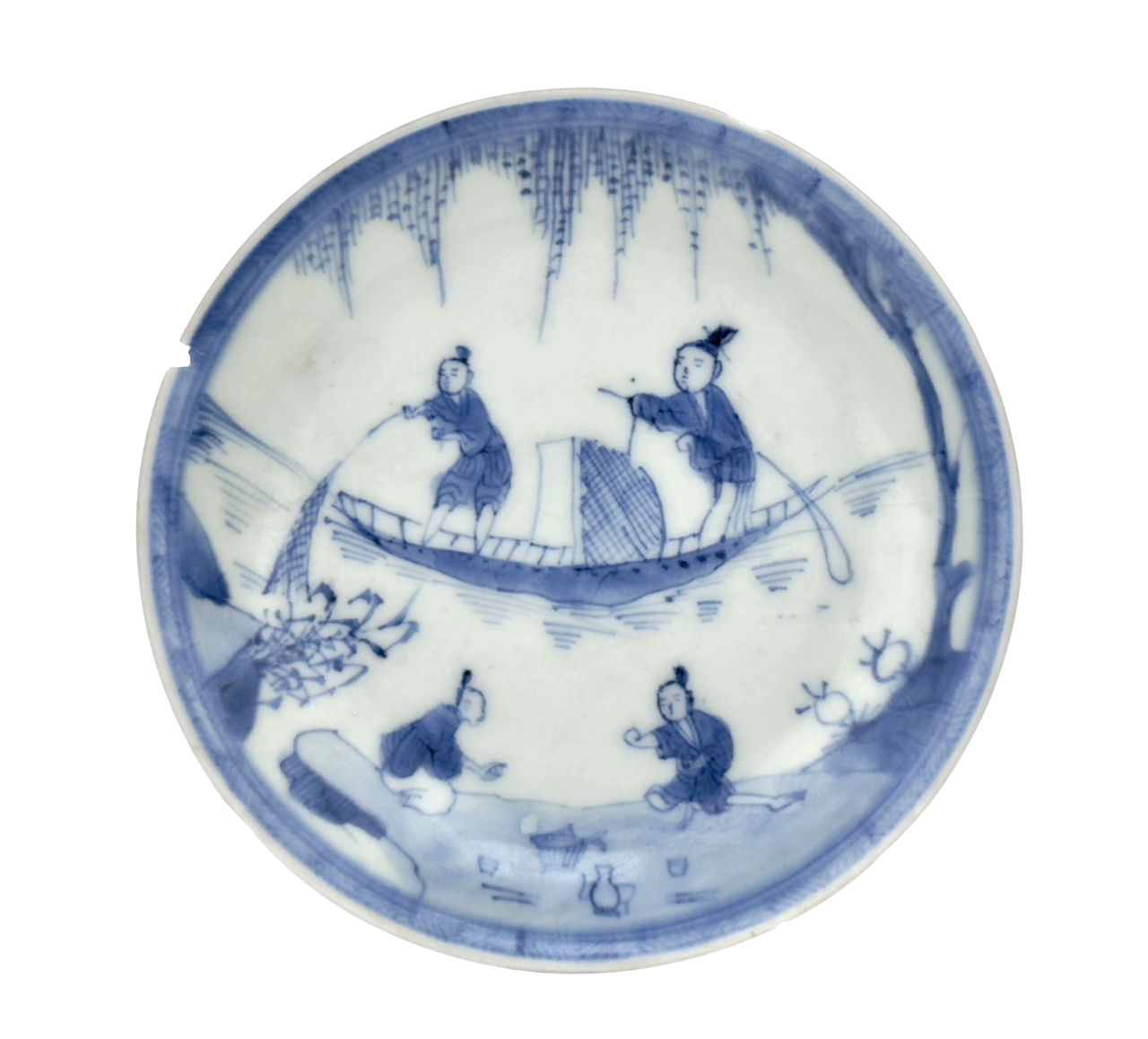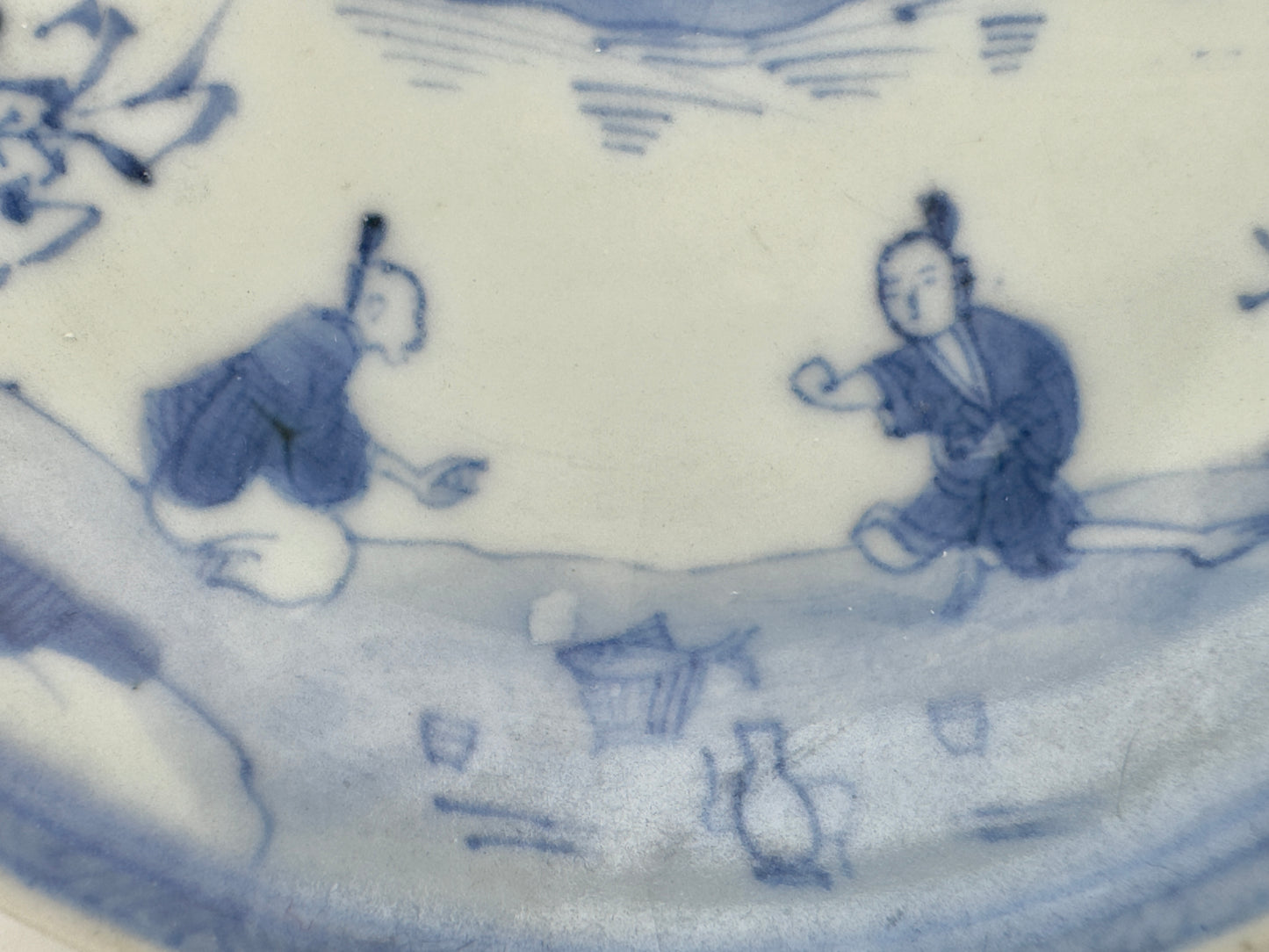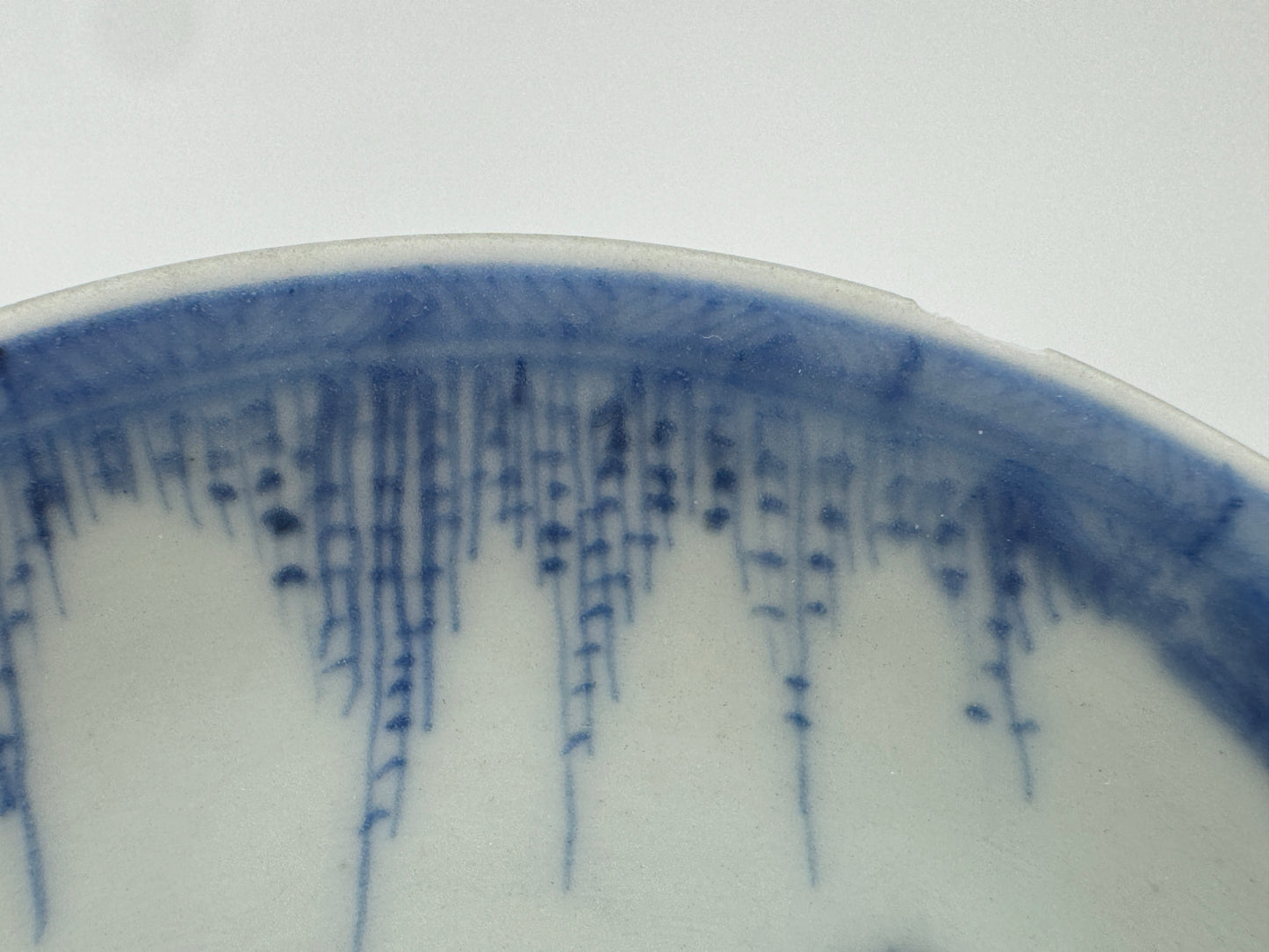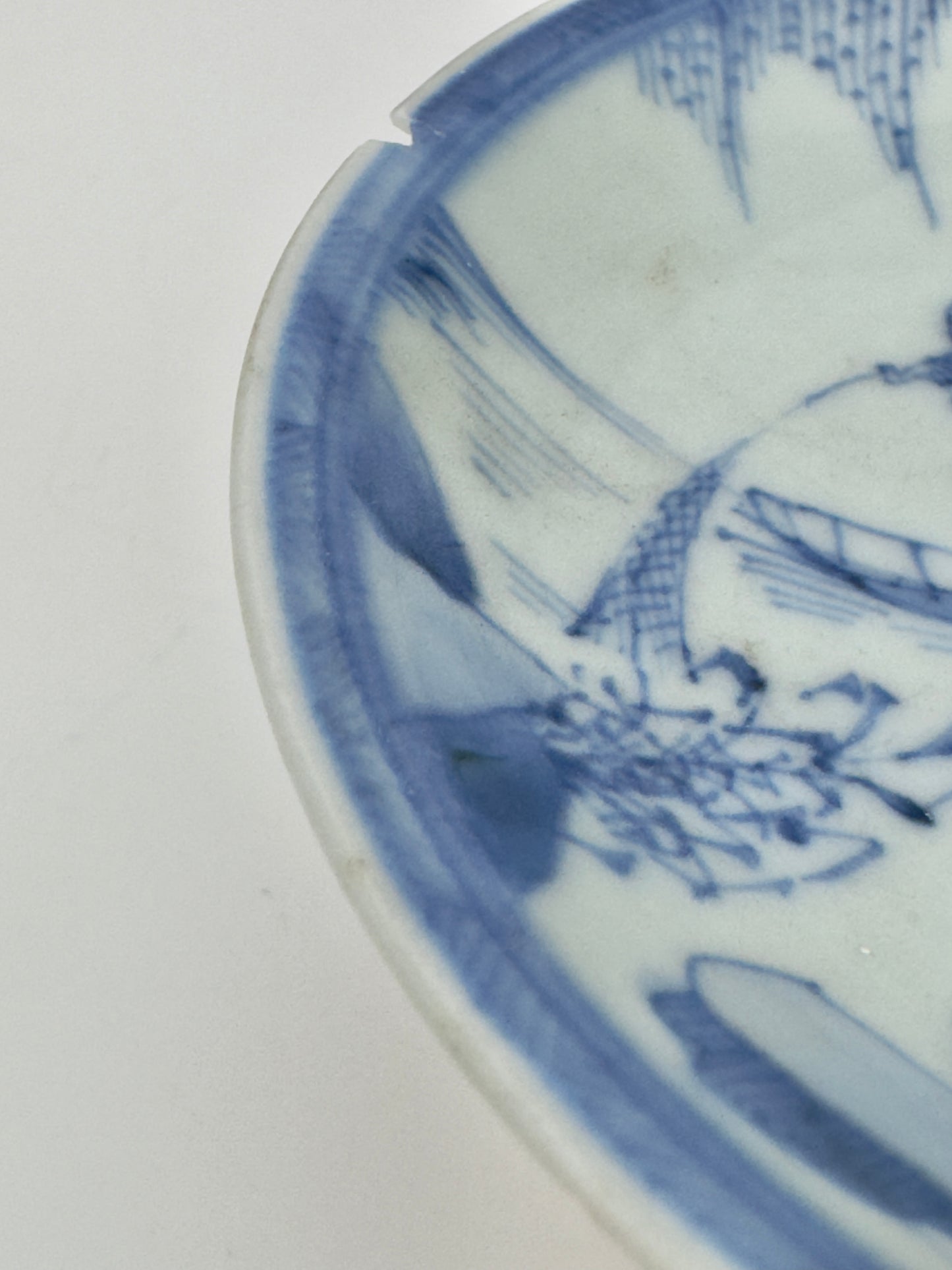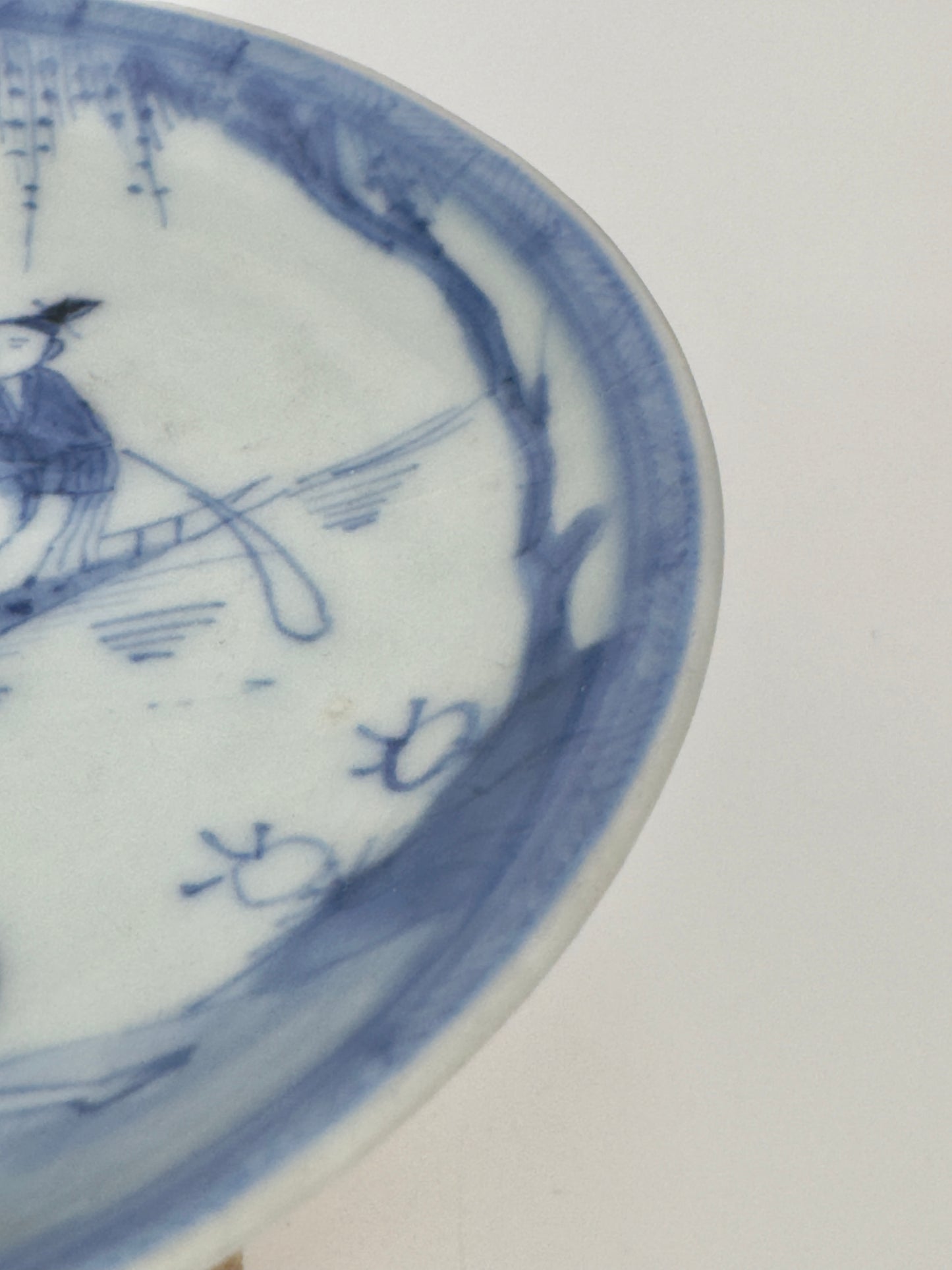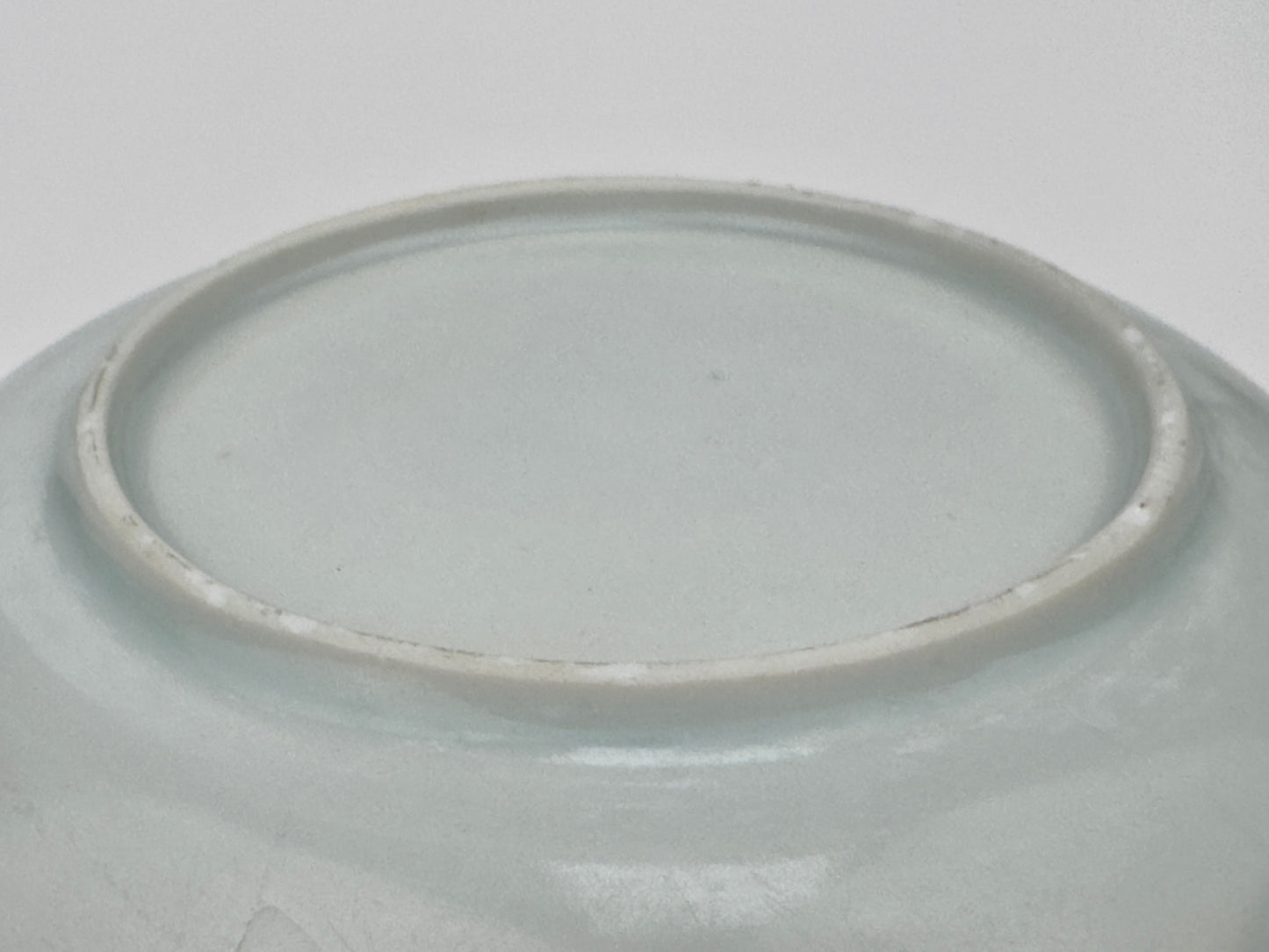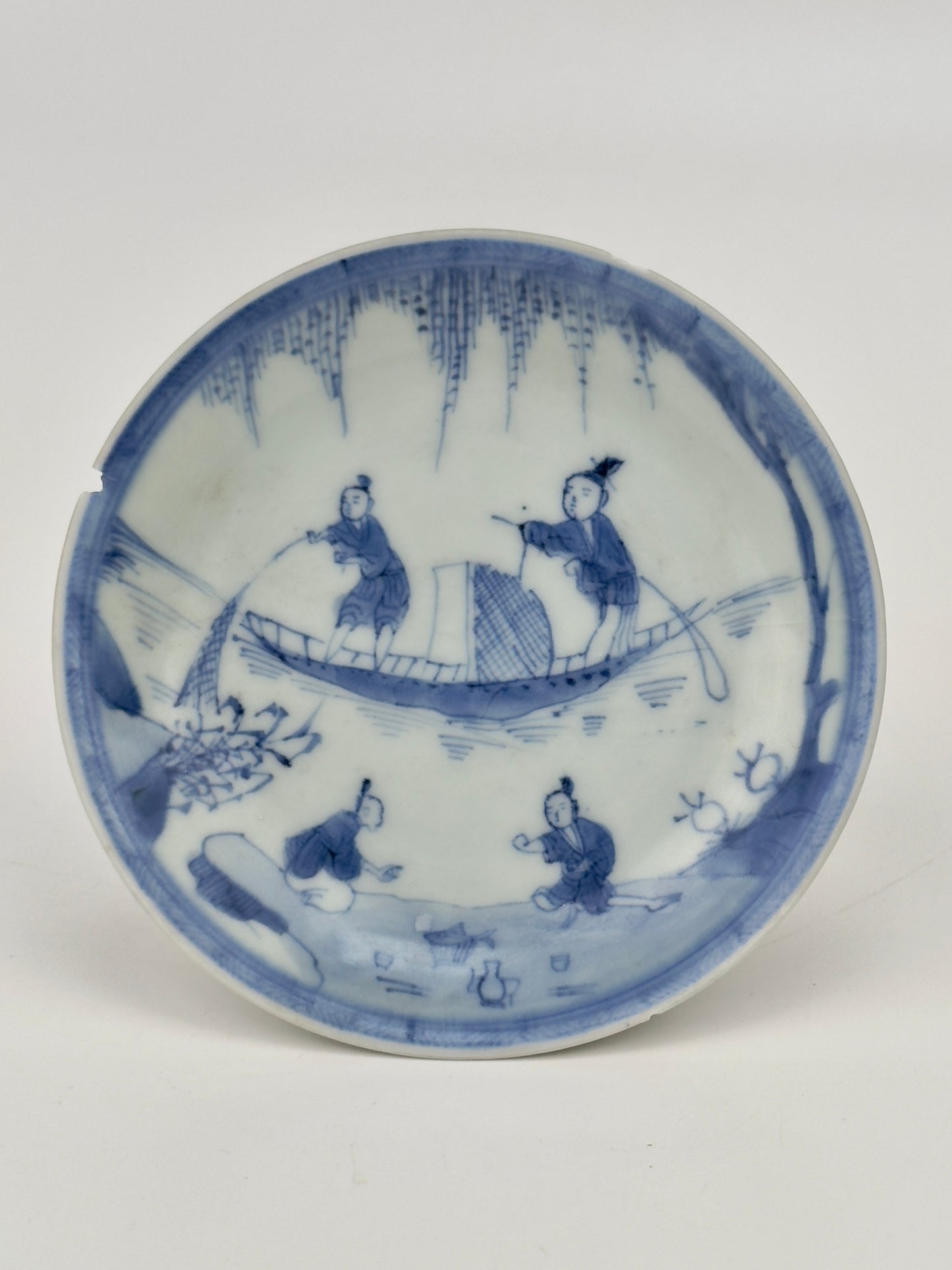AUA Oriental Art
Fishing Scene Blue And White Saucer Circa 1725, Qing Dynasty, Yongzheng Reign
Fishing Scene Blue And White Saucer Circa 1725, Qing Dynasty, Yongzheng Reign
Couldn't load pickup availability
A boat with two figures standing on it, seemingly engaged in fishing with a net. Below the boat, on the shore, there are two more figures involved in a different activity, possibly cooking or preparing food. The background includes trees with hanging branches and other natural elements, creating a serene and picturesque atmosphere. The intricate and detailed painting on the porcelain exudes an antique charm.
Period : Qing Dynasty, Yongzheng Period
Production Date : C 1725
Made in : Jingdezhen
Destination : Netherland
Found/Acquired : Southeast Asia , South China Sea, Ca Mau ship
Size : 11 cm (Diameter) x 3cm (Height)
Condition : Good(chip on left side)
Reference : Double checked with reference to the original catalogues
1) Tau Co Ca Mau(The Ca Mau Shipwreck) Catalogue 2002 / The National Museum of Vietnamese History
2) THE CA MAU SHIPWRECK PORCELAIN : from the Collection of Dr.Zelnik , 2000
3) Sotheby’s Amsterdam, 2007 : Made In Imperial China / Sotheby's
4) Asian Ceramic Found along Maritime Silk Route / National Maritime Museum of Korea
* The Ca Mau Cargo
The Ca Mau Cargo refers to a Chinese cargo sunken sometime between 1723 and 1735 off the coast of Vietnam’s farthest point in the South China Sea, discovered by Vietnamese fishermen in 1998. It is believed the ship was a Chinese merchant’s cargo on its way from Canton (Guangzhou) to Batavia when it caught fire and sank. The merchant had ordered the goods on board for Dutch traders, who had limited access to China and its ports.
* Porcelain for the European Market
The Ca Mau Cargo consisted of numerous types of porcelain, chinaware and blue and white wares, all designed for the European market. Blue and white ceramics recovered from the cargo appear decorated with the so-called ‘Scheveningen landscape’, also known as ‘Deshima décor’. This motif usually depicted a traditional Dutch fishing village, executed in Chinese style. Chinese wares with Western motives were extremely popular and made to order and were known as ‘China de commande’.
Share
